Introduction
In a dental context, occlusion simply means the contact between teeth. More technically, it is the relationship between the Maxillary (upper jaw) and Mandibular (lower jaw) teeth when they approach each other, as occurs during chewing or at rest, with the help of muscles of mastication and jaw joints.
There are two conditions in normal occlusion. Static occlusion refers to contact between teeth when the jaw is closed and stationary, while dynamic occlusion refers to occlusal contacts made when the jaw is moving, as with chewing.
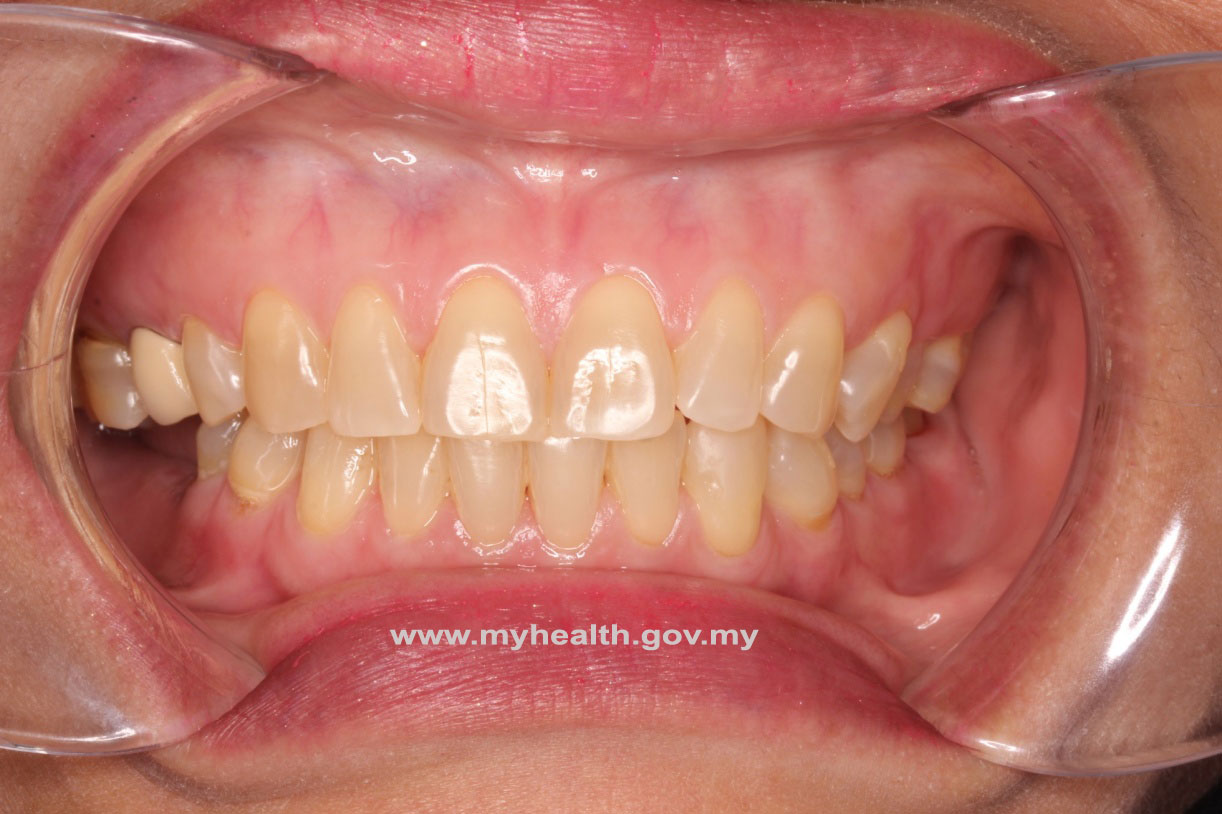
Example of Good occlusion
Deranged bite is the misalignment of teeth and jaws, or more simply, a “bad bite”. It can cause a number of health and dental problems. The body will try to optimize its function in a dysfunctional environment.
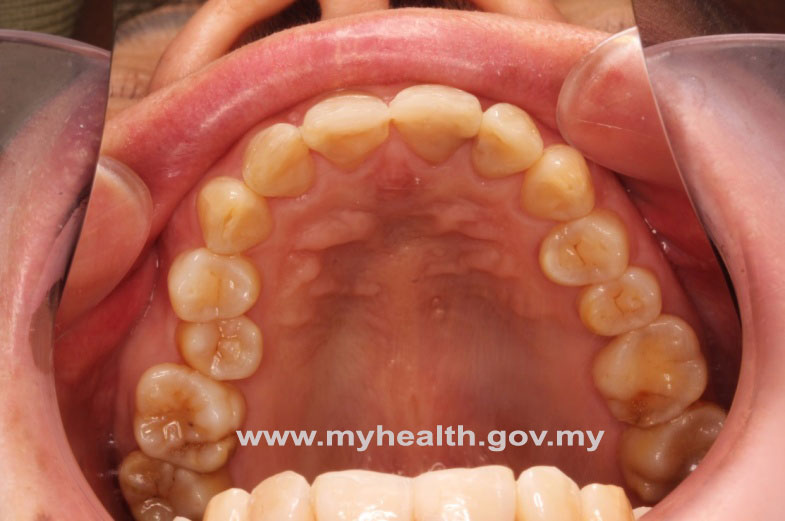
Early loss of milk teeth can lead to impacted second right premolar
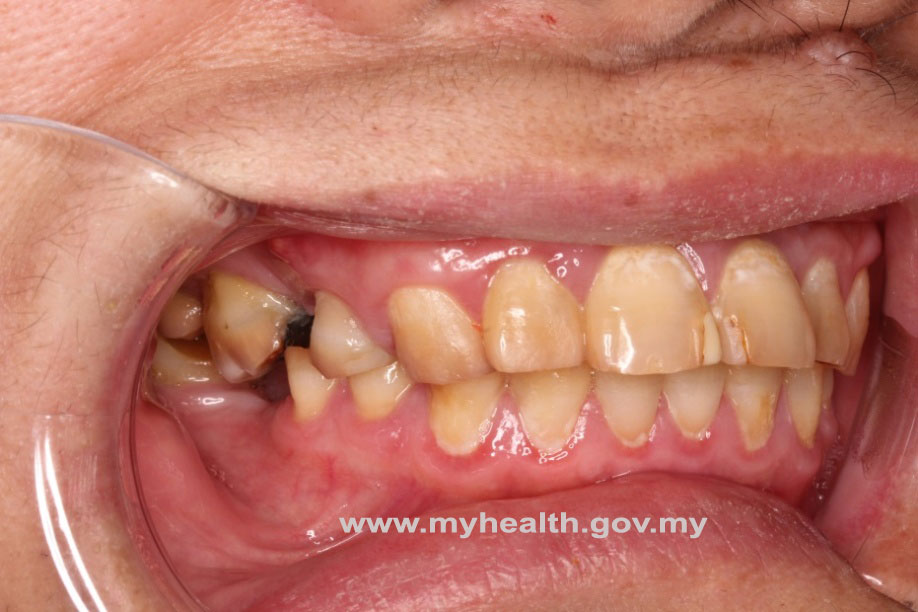
Over-eruption of upper right first molar due to long term of opposing lower molar
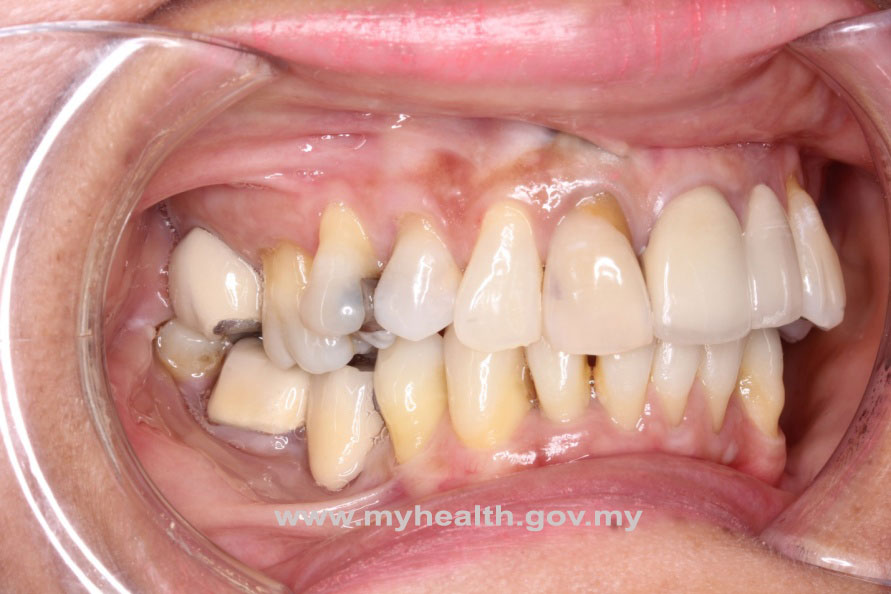
Deranged bite with over eruption of upper right molar, displaced of upper right premolar, exposed gingiva on upper right incisor and failed lower right bridge.
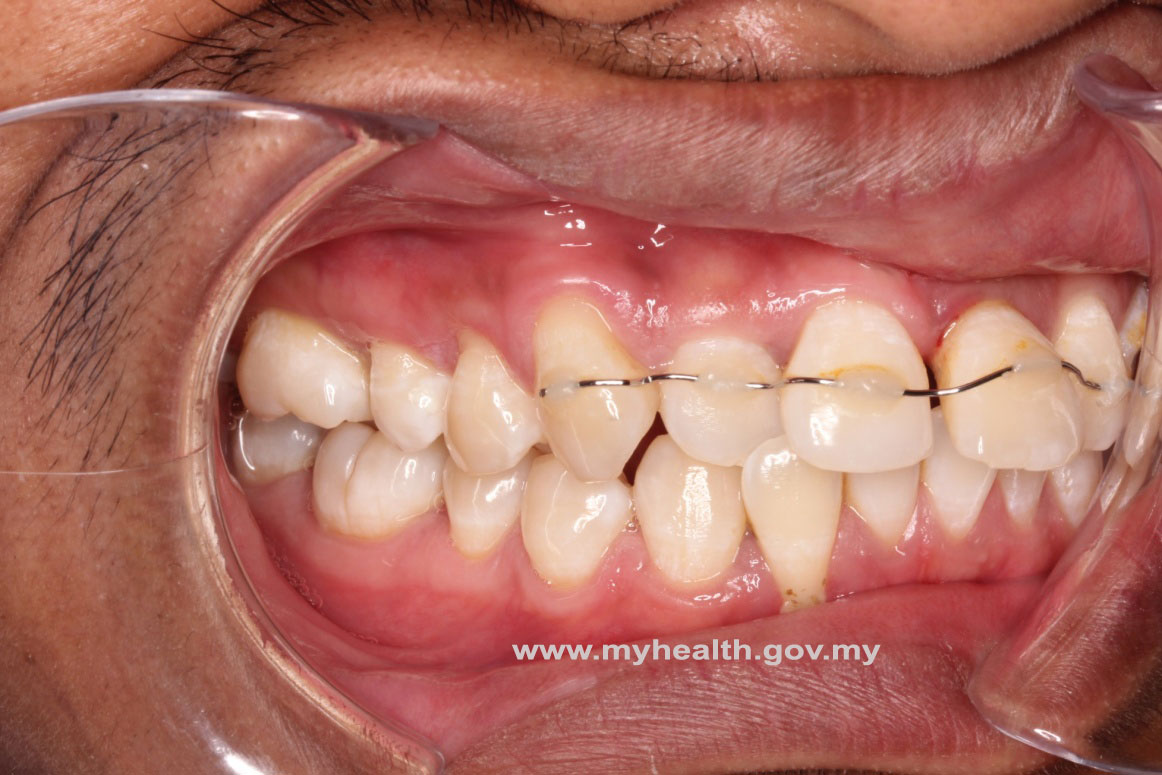
Cross-bite between upper right second incisor and lower right second incisor. Upper left first incisor displaced (metal splint is used to hold with other teeth)
Deranged bite can be associated with a number of problems, including crooked teeth, gum problems, jaw joints, and jaw muscles.
Teeth, fillings, and crowns may wear, break, or loosen, and teeth may be tender or ache.
Causes
-
Acquired deranged bite can be due to premature loss of milk teeth
-
Long term loss of opposing tooth that leads to over-eruption of upper right first molar
-
Dental injuries such as in alleged fall, sport injury, motor vehicle accident can lead to malalign of teeth or deranged bite.
In certain cases patients with deranged bite might have no complaints. Receding gums can be exacerbated by a faulty bite. If the jaw is malpositioned, jaw muscles may have to work harder, which can lead to fatigue and or muscle spasms. This in turn can lead to headaches or migraines, eye or sinus pain, and pain in the neck, shoulder, or even back. Untreated damaging deranged bite can lead to occlusal trauma.
Deranged bite can also be a contributing factor to sleep disorder breathing which may include snoring, upper airway resistance syndrome, and / or sleep apnea (apnea means without breath).
Sign and Symptoms
- Toothache – the tooth is the first thing you bite on
- Headaches and stiff neck – because the muscles are stretched
- Clicking joints – because the joint is pulled forward on the disc
- Hypersensitivity of teeth – teeth bends when being bitten on. Continuous pressure from a deranged bite will cause micro crack and exposing vital part of the root. These eventually cause extra sensation to the tooth.
- Breaking of teeth – when the tooth just can’t flex enough to survive. Often broken are the heavily restored teeth. In severe deranged bite, splitting of teeth is sometimes unavoidable.
Treatment Options
- No treatment if the deranged bite has no sign and symptoms and not affecting function.
- Refer Orthodontist to realign affected teeth.
- Removal portion of teeth by placing crown, such as for over-erupted cases.
- Tooth adjustments in deflective contact cases (Trim a bit off the filling or tooth structure).
- Extraction of affected tooth and replaced with a denture, a bridge or an implant.
- Dental splint for the jaw joints pain cases.
- Medication (usually temporary) and advice for a diet of softer foods.
- Exercise to relax tensed muscles, and physiotherapy for stress-related clenching.
- Surgery of jaws if indicated and needed.
References
- “Tooth surface loss; Part 3: Occlusion and splint therapy” British Dental Journal, Vol. 186, No. 5, 1999-03-13, via nature.com. Retrieved on 2007-08-18.
- Davies, S., and R. M. J. Gray, “Practice: What is occlusion?” British Dental Journal, Vol. 191, No. 5, pp. 235–245, 2001-09-08, via nature.com. Retrieved on 2007-08-18.
- “What is Malocclusion?” (Website). American Academy of Pediatric Dentistry, 2007. Retrieved on 2007-08-18.
- “Frequently Asked Questions: Jaw problems and headaches”. (Website). British Dental Health Foundation, 2007. Retrieved on 2007-08-18.
| Last Reviewed | : | 23 August 2019 |
| Writer | : | Dr. Saripah bt. Saud |
| Accreditor | : | Dr. Saridatun Nur bt. Abdul Salam |
| Reviewer | : | Dr. Roshima bt. Mohd Sharif |







